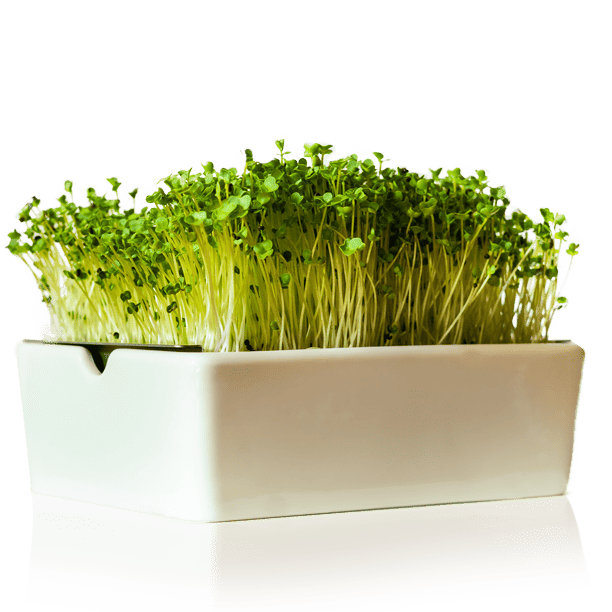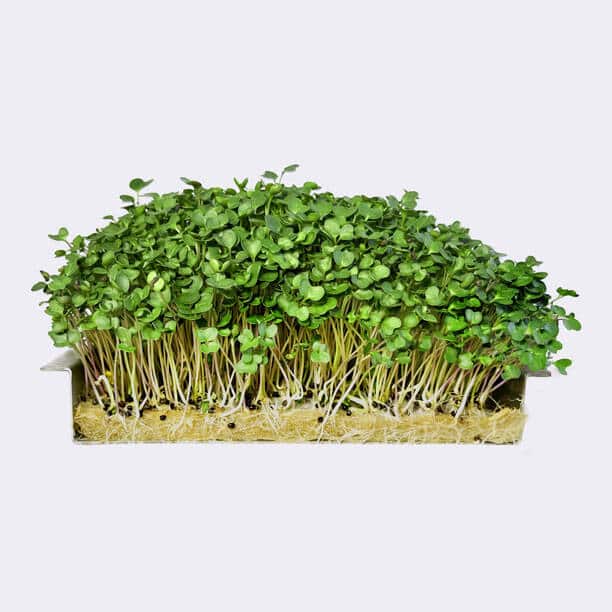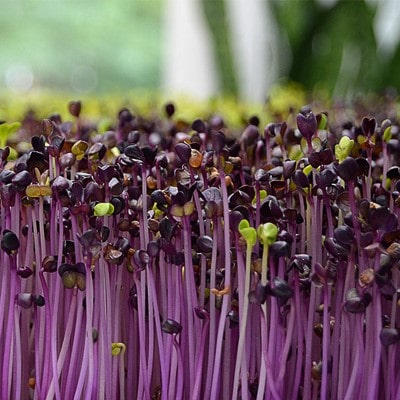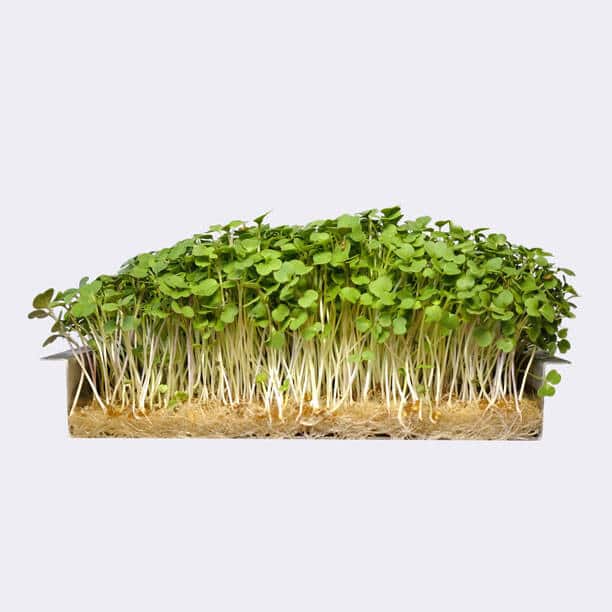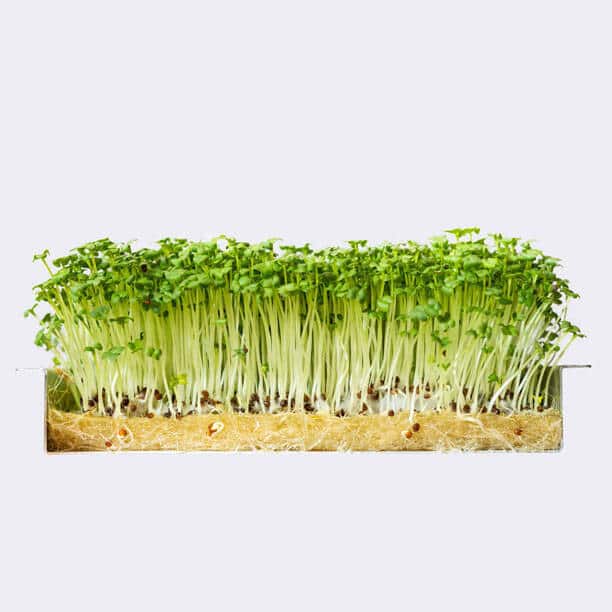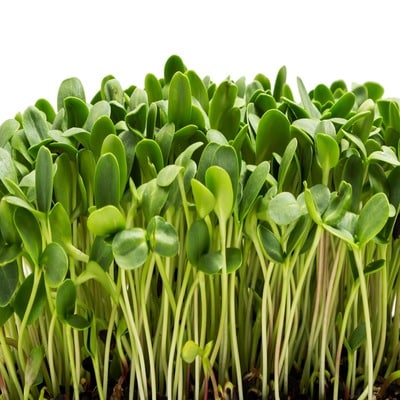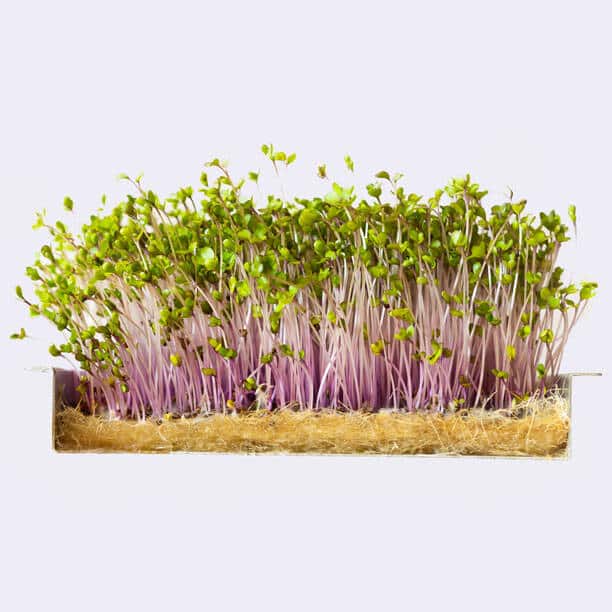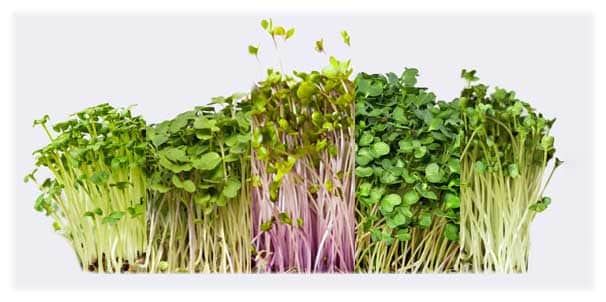
Have you ever wondered what microgreens are the best to grow? Here we talk about different factors including ease of growth, nutritional content, and a lot more for our picks of the top 11 microgreen seeds to grow at home. While our ranking may be subjective, we’ve endeavored to give you well-reasoned insights on each selection. We’ll be looking at factors such as taste, nutritional content, looks, and ease of growth. Your experience might differ, but we’re confident this guide will give you a good starting point.
A quick word of wisdom before we start: always aim for organic, non-GMO seeds. Yes, they might cost a few pennies more, but remember, you’re growing these greens to eat. You want to know that what you put in your body is both nutrient-dense and chemical-free!
Without further ado, let’s get to the list.
1. Broccoli
Growth Speed: 7-12 days.
Taste: Mild and similar to cabbage.
Nutritional Content: Contains vitamins A, B, C, E, and K, macro-elements calcium, magnesium, and phosphorous, and micro-elements iron, copper, and zinc.
Ease of Growth: 8/10 – Tolerant of different growing conditions, good for beginners.
Appearance: 7/10 – Attractive green shoots with small leaves.
2. Kale
Growth Speed: 7-10 days.
Taste: Mild and slightly sweet.
Nutritional Content: Loaded with vitamins A, B, C, E, and K, calcium, iron, magnesium, phosphorus, potassium, zinc, carotene, amino acids, and protein.
Ease of Growth: 9/10 – Tolerant to most conditions, needs a fair amount of light.
Appearance: 7/10 – Deep green, curly leaves.
3. Alfalfa
Growth Speed: 7-10 days.
Taste: Mild and slightly nutty.
Nutritional Content: High in Vitamin A, B1, B6, C, E, and K. Contains calcium, potassium, carotene, iron, and zinc.
Ease of Growth: 9/10 – Very easy, making them great for beginners.
Appearance: 5/10 – Bright green color but not all seed husks fall off.
4. Radish
Growth Speed: 6-10 days.
Taste: Spicy and peppery.
Nutritional Content: High in vitamins A, B, C, E, and K. They also deliver calcium, iron, magnesium, phosphorus, potassium, and zinc.
Ease of Growth: 9/10 – Sprouts quickly and reliably.
Appearance: 8/10 – Bright green or purple with thick stems (color depends on variety.)
5. Arugula
Growth Speed: 7-10 days.
Taste: Peppery and slightly bitter.
Nutritional Content: Rich in calcium, vitamin A, C, E, K, Iron, Lutein, and beta-carotene..
Ease of Growth: 7/10 – Tolerant to most conditions but requires careful watering (if growing in soil.)
Appearance: 6/10 – Bright green, lobed leaves add an aesthetic appeal.
6. Beetroot
Growth Speed: 10-14 days.
Taste: Earthy and sweet.
Nutritional Content: High in Vitamin B6, C, Folate, and the minerals copper, iron, magnesium, manganese, and potassium.
Ease of Growth: 7/10 – Pretty easy to grow but needs careful watering and adequate lighting.
Appearance: 10/10 – Vibrant red stems and green leaves make them visually striking.
7. Mustard
Growth Speed: 6-8 days.
Taste: Spicy and tangy.
Nutritional Content: Contains Vitamin A, C, E, protein, dietary fiber, folate, niacin, riboflavin, thiamin, sodium, potassium, calcium, copper, iron, magnesium, manganese and zinc.
Ease of Growth: 10/10 – Grows quickly and reliably under various conditions.
Appearance: 8/10 – Bright green, frilly leaves.
8. Sunflower
Growth Speed: 10-12 days.
Taste: Nutty and slightly sweet.
Nutritional Content: High in Vitamins A, C, E, K, B6, folate, minerals including iron, potassium, and magnesium.
Ease of Growth: 9/10 – Hardy, good for beginners.
Appearance: 7/10 – Tall, sturdy stems with bright green leaves.
9. Pea Shoots
Growth Speed: 10-14 days.
Taste: Sweet and similar to mature peas.
Nutritional Content: High in B vitamins, C, and K, folic acid, magnesium, manganese, and selenium.
Ease of Growth: 10/10 – Grow reliably under various conditions.
Appearance: 9/10 – Vibrant green color, tendril-like growth adds texture.
10. Amaranth
Growth Speed: 10-15 days.
Taste: Mild, earthy flavor.
Nutritional Content: High in vitamin A, C, E, folate, iron, magnesium, phosphorus, potassium, dietary fiber, calcium, amino acids, antioxidants, minerals and essential lysine.
Ease of Growth: 6/10 – A picky microgreen that needs pretty precise conditions.
Appearance: 10/10 – Bright red color, small leaves add a unique aesthetic.
11. Kohlrabi
Growth Speed: 10-12 days.
Taste: Mild and sweet, similar to cabbage.
Nutritional Content: High in antioxidants, fiber, Vitamins A,C, and B-complex, calcium, potassium and copper.
Ease of Growth: 9/10 – Easy to grow reliably, especially hydroponically.
Appearance: 9/10 – Pretty purple stem with light green leaves.
Conclusion
In conclusion, I hope that these 11 choices have provided some valuable insights into the best microgreens to grow or incorporate into your next meal. From the nutritionally packed broccoli to the uniquely flavorful arugula, each microgreen has its own set of benefits and characteristics that make them worth exploring. Don’t hesitate to experiment with these miniature greens – trying new varieties can open up a world of flavors, textures, and health benefits that you may have never experienced before. Happy growing and tasting!
Want to Grow Microgreens?
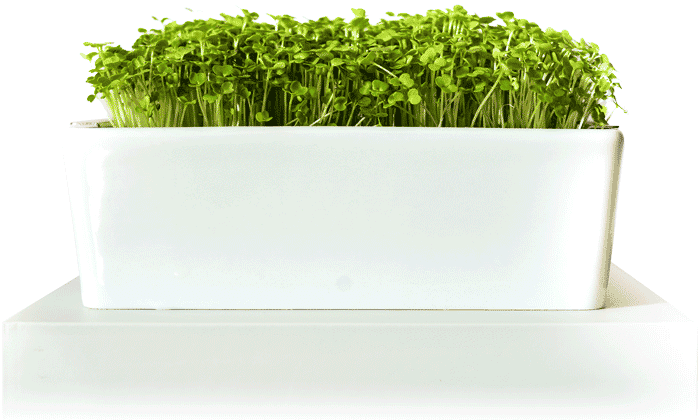
Microgreen Grow Kit
- Beginner Friendly
- Grow Guarantee
- For Small Spaces
- No Soil – No Mess

